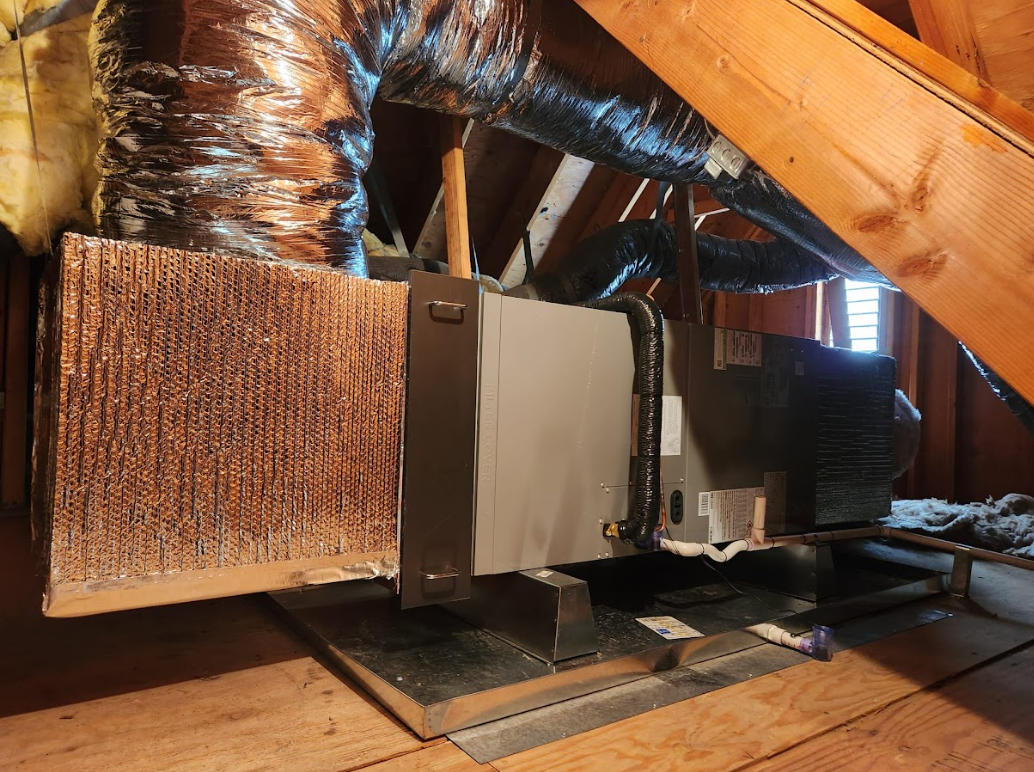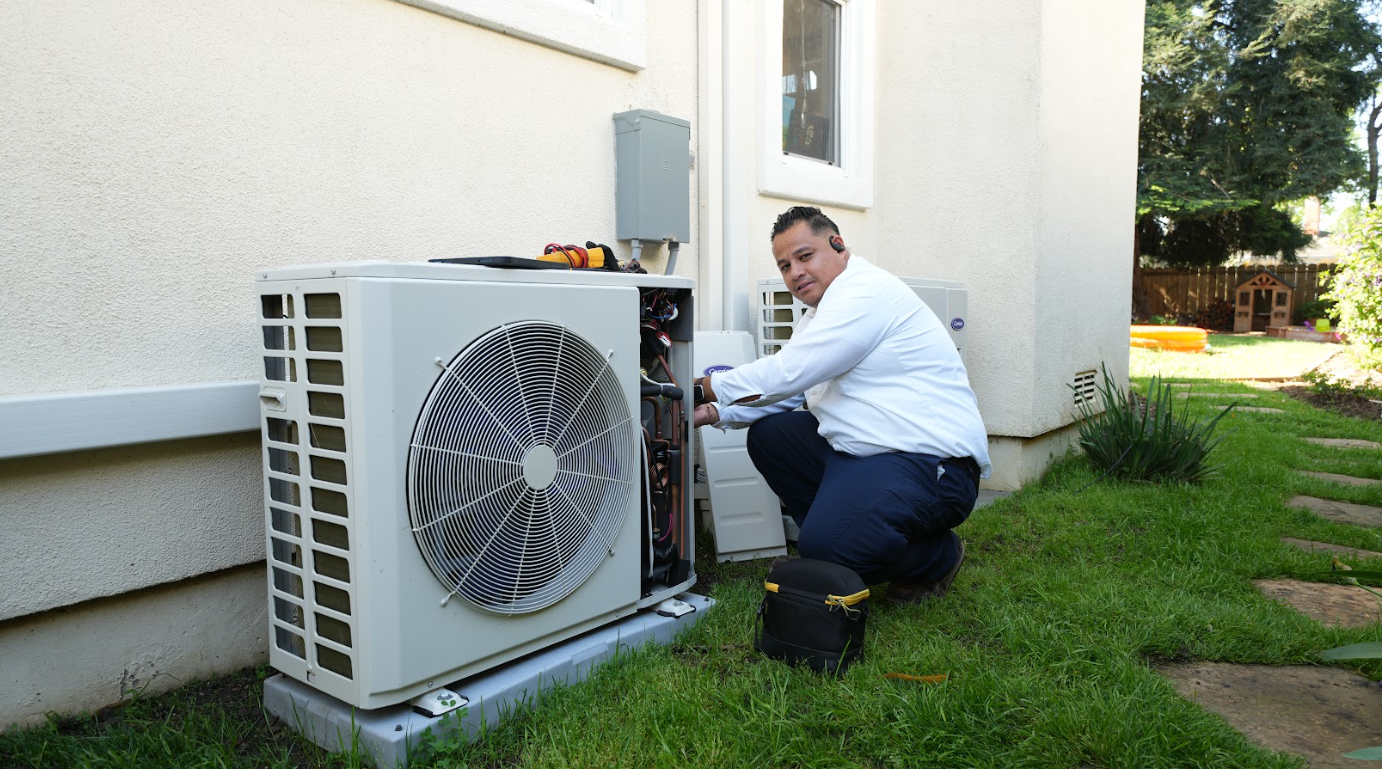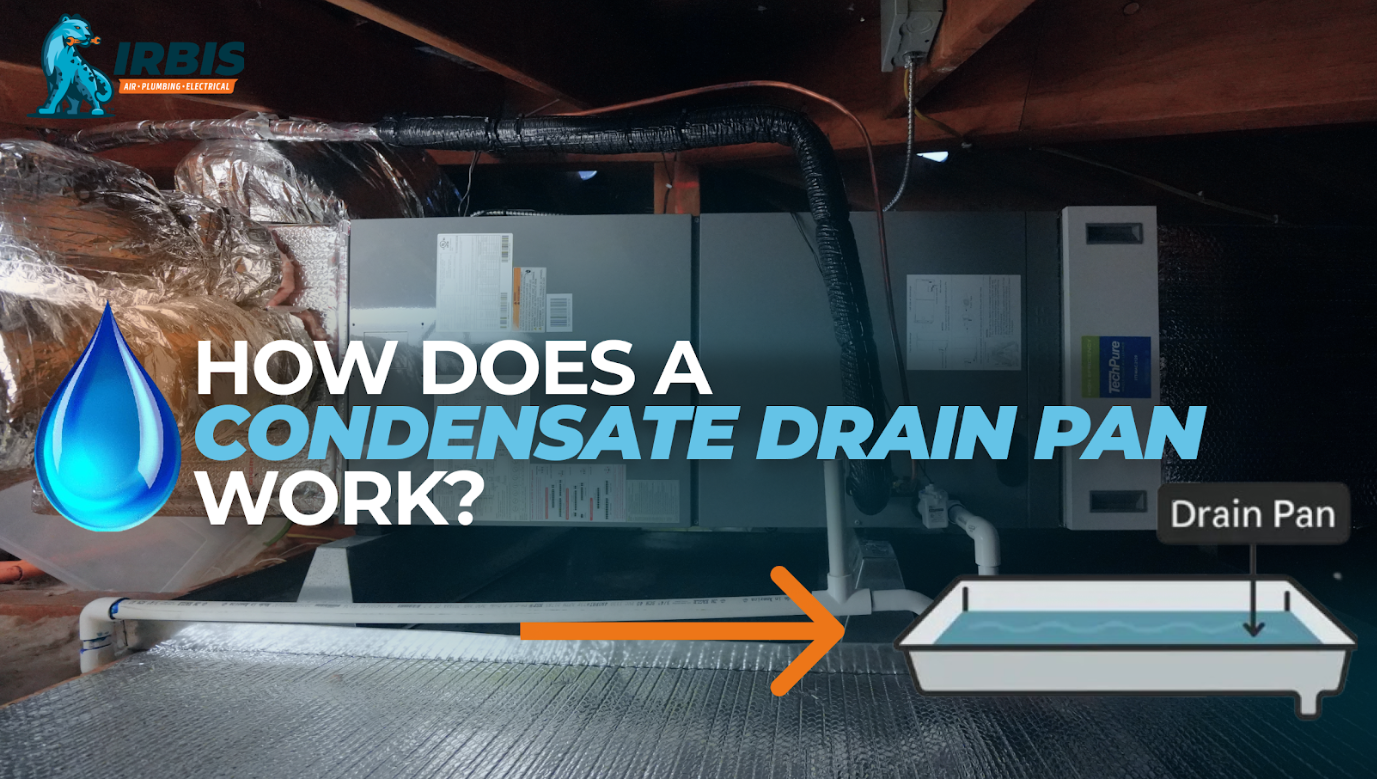An AC drain pan, also called a condensate drain pan, is a small but vital part of your cooling system. It collects the water that forms as your air conditioner removes humidity from the air and directs it away from your home. When it doesn’t work properly, you may face issues like leaks, mold, and even damage to your HVAC system—making it important to understand how it works and how to maintain it.
What Is a Condensate Drain Pan?

A condensate drain pan is a metal or plastic tray designed to catch the water droplets (condensation) that form when your air conditioner cools warm, humid air. Without it, that moisture would simply drip into your unit or your home, causing water damage and mold growth.
The drain pan is typically located directly beneath the evaporator coil inside your indoor air handler as the coil cools the air, condensation forms and drips down into the pan, which then channels the water into a drain line that leads outside your home.
Most systems have two pans:
- Primary drain pan – built into the air handler, located directly under the evaporator coil. This is the main pan that handles daily condensation.
- Secondary drain pan – a backup pan installed underneath the entire unit. Its purpose is to catch overflow if the primary pan cracks, rusts, or the drain line gets clogged.
This dual setup helps protect your home from leaks, but it also means both pans should be inspected regularly to ensure they’re in good condition.
How Does a Condensate Drain Pan Work?
The condensate drain pan plays a simple but critical role in your air conditioning system. As warm air passes over the cold evaporator coil, moisture from the air condenses into water droplets. These droplets drip down into the drain pan positioned below the coil.
From there, the pan directs the water into the condensate drain line, which carries it safely outside your home. In most cases, you’ll never notice this process—it happens quietly every time your AC runs.
If the primary drain pan or drain line becomes clogged or damaged, however, water may overflow. That’s when the secondary drain pan steps in as a backup, preventing leaks and potential water damage inside your home.
Common Problems With AC Drain Pans
Like any HVAC component, a condensate drain pan can develop issues over time. Some of the most common problems include:
- Cracks or rust – Metal pans may corrode, and plastic pans can crack, leading to leaks.
- Clogged drain line – Dirt, algae, or debris can block the line connected to the drain pan, causing water to back up and overflow.
- Overflowing water – If the pan is full and can’t drain properly, you may notice puddles around your unit.
- Mold and odors – Standing water in the pan can encourage mold growth and create unpleasant smells in your home.
Catching these problems early can save you from costly repairs and protect your HVAC system from damage.
Signs Your Condensate Drain Pan Needs Attention
Your AC drain pan usually works quietly in the background, but when something goes wrong, the signs are often noticeable. Watch out for these common warning signals:
- Water pooling around your unit – a clear sign the pan is overflowing or leaking.
- Excess humidity indoors – if water isn’t draining properly, moisture can build up inside your home.
- Musty or moldy odors – standing water in the pan can cause unpleasant smells to circulate through your vents.
- System shutdowns – many modern HVAC systems have a float switch that turns off the unit when the drain pan overflows to prevent damage.
If you notice any of these symptoms, it’s best to address the issue quickly before it leads to bigger problems.
How to Clean an AC Drain Pan (Step-by-Step)

Keeping your AC drain pan clean helps prevent clogs, mold, and water damage. Here’s a simple step-by-step process you can follow:
- Turn off your HVAC system – Always cut the power before starting any maintenance.
- Locate the drain pan – It’s usually found beneath the evaporator coil inside the indoor air handler.
- Remove standing water – Use a wet/dry vacuum or towels to clear out any water in the pan.
- Clean the pan – Wash it with warm soapy water or a mixture of water and vinegar to kill mold and bacteria.
- Check the drain line – Pour a small amount of vinegar or a commercial cleaner down the line to clear minor clogs.
- Dry the pan completely – Make sure no moisture is left before restarting your system.
Tip: If the pan is cracked, rusted, or heavily damaged, cleaning won’t be enough—it may need repair or replacement by a professional. The certified technicians at IRBIS HVAC can safely inspect and restore your system to prevent future problems.
Preventive Maintenance Tips
A clean and functional condensate drain pan keeps your AC system running smoothly and protects your home from water damage. Here are some simple maintenance tips:
- Schedule regular HVAC inspections – Have a professional check the drain pan and drain line during routine maintenance.
- Use vinegar periodically – Pouring a cup of white vinegar into the drain line every few months can help prevent algae and clogs.
- Keep the area around your unit clean – Dust and debris can find their way into the pan and cause buildup.
- Replace a damaged pan promptly – Don’t ignore cracks, rust, or leaks—replacement is often the best solution.
- Monitor for warning signs – Catching leaks or musty odors early can save you from expensive repairs later.
At IRBIS HVAC, we provide thorough AC maintenance services in San Jose and the Bay Area, ensuring your system—including the drain pan—stays in top condition year-round.
When to Replace a Condensate Drain Pan
Even with regular care, a condensate drain pan won’t last forever. You may need a replacement if:
- The pan is cracked, rusted, or leaking beyond repair.
- Mold or corrosion is widespread, and cleaning is no longer effective.
- The unit is older, and the drain pan has exceeded its expected lifespan.
Since the drain pan is located inside your air handler, replacement is best handled by an experienced HVAC technician. At IRBIS HVAC, we specialize in diagnosing drain pan issues and installing durable replacements that protect your system and home from future water damage.
The condensate drain pan may be a small part of your air conditioning system, but it plays a big role in protecting your home from leaks, mold, and costly damage. By understanding how it works, watching for warning signs, and keeping it clean, you can extend the life of your AC and avoid unexpected repairs.
If you suspect a problem with your AC drain pan—or just want peace of mind through regular maintenance—our team at IRBIS HVAC is here to help. We provide expert inspections, cleaning, and replacements for homeowners in San Jose and the surrounding areas. Contact us today to schedule your service and keep your cooling system running at its best.

